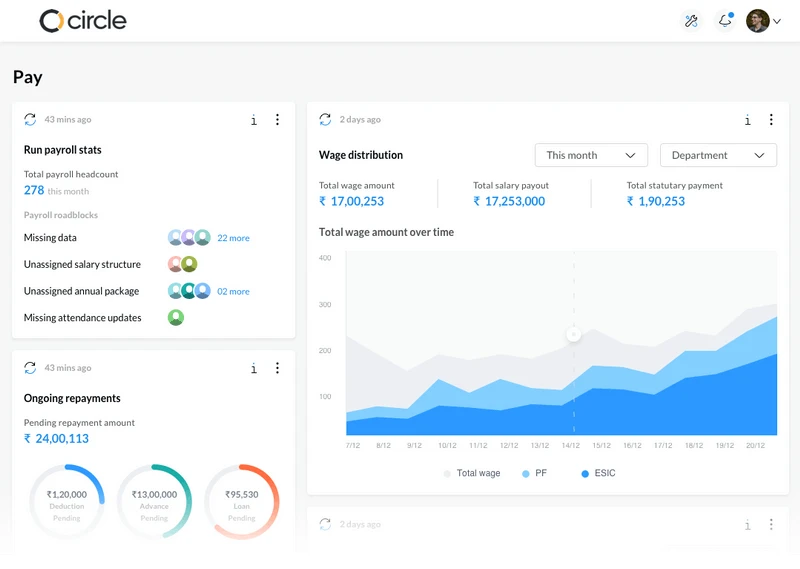Maternity leaves are necessary for pregnant women, new mothers, and women who went through labour or medical operation to recover physically and mentally. However, implementing a maternity leave policy in corporates to satisfy the working mother’s and the company’s needs is challenging.
In several countries, maternity leaves are considered a legal requirement. However, the duration and paid amount vary in different companies and places. There are many benefits to supporting new mothers in another phase of their life. It improves employee retention, reduces absenteeism, and enhances the company’s reputation. Around 43% of women quit their job due to childbirth, and 50% of breastfeeding mothers are looking for jobs.
This blog explores the strategies or ways to create a maternity leave policy that supports working mothers and meets the company’s needs.
Maternity Benefit Act, 1961
This social security scheme benefits women’s employment during maternity. It means getting paid a salary to care for the newborn child during the leave period. It protects the dignity of motherhood and helps women with their finances.
The Act applies to any organisation in India with over 10 employees; organisations must follow the regulations to enhance employee goodwill. Women who have worked with a company for at least 80 days in the previous year can take leave under this Act. All the provisions of the Act apply to women for miscarriage or abortion for six weeks. However, if anyone gives birth during this period, the salary is paid within 48 hours of submitting the birth certificate.
Under the Maternity Benefit Act Amendment of 2017, the leave period follows an extension to 26 weeks, 8 weeks before the delivery date and remaining after the child’s birth. The Ministry of Labour states that women can work from home during maternity leave. However, this condition only applies after agreements between employer and employees.
Strategies to Consider While Creating a Maternity Leave Policy
- Ensuring a Proper Information Flow
When working mothers are on maternity leave, they often feel guilty for letting their team suffer with extra work. After a long maternity break, mothers feel anxious when returning to work if the office allows no transition, orientation, or updates on the finished work and current projects.
The first day after returning from leave is challenging for new mothers to adapt to the environment. Therefore, if the company motivates and prepares to support new mothers during this stage, it increases her trust and makes work much more manageable.
- Understanding Legal Obligations
Before implementing policies, companies should make legislation their priority. Maternity leaves generally depend on country or state legislation. The law defines the leave to be complete, partial, or unpaid. Thus, companies must hire legal representatives to clarify doubts and resolve issues arising during the leave period.
- Specifying Additional Perks
Maternity leaves give a legal minimum wage to every working mother with full evidence and consent. However, MNCs (multi-national corporations) or private companies deliver additional perks over the legal minimum before getting government leads.
For example, companies may offer extra paid leaves to working mothers. Companies may also enhance their maternity benefits policy by providing flexible working arrangements, paid leave top-ups, and childcare subsidies. These perks help in attracting and retaining talent.
- Considering Company Culture
Considering company culture is crucial when companies craft maternity policies for their working mothers. When the culture is family-friendly, employees can consider generous maternity benefits.
- Developing Precise Maternity Policies
Companies need to be transparent about their maternity leave policies. It helps working mothers expect what they will get from the company during the leave period. Companies can prepare a handbook to give to the employees. This handbook can be included in the offer letter for new employees.
If the company has a global workforce, the maternity policy must comply with the laws of that specific country.
- Taking Advice from Shareholders
Companies should consider opinions or input from all shareholders while implementing maternity policies. Stakeholders mean employees, managers, human resource management, etc., to ensure the policy satisfies all the parties.
- Considering Business Needs
Maternity leave can sometimes be expensive for businesses, and they should implement what’s essential for the employees. Companies can provide maternity leave for many weeks but limit the paid leave period. If the company offers short-term disability payments to employees, human resource management can extend this benefit on maternity leaves. Organisations can enhance maternity benefits to offer flexible working arrangements and retain the best female talent.
- Building a Competitive Policy
Companies must always remember that a robust maternity leave policy differentiates one company from another. It helps distinguish between the industries or communities depending on the country. It establishes a positive brand image by attracting and retaining highly qualified job applicants.
- Encouraging a Positive Environment
Talking about parenthood at work should not be a cause for hesitation. Managers should ask questions freely to working mothers regarding the problems or challenges they face at work. It shows signs of empathy from leadership and builds a positive environment at the workplace. Companies taking proper measures about maternity leaves see 83% of working mothers being positive at work.
- Allowing Peer Support
New mothers become vulnerable and uncertain after coming to the workplace after a long gap. She might be a single parent or the only mother in a company. Peer support groups might be a smart solution here to help mothers at ease.
Organisations can introduce mobile apps for mothers to discuss problems like lack of sleep, juggling work, or stressful family life in the group. Other group participants can give tips for pumping at work or easily handling the work procedures. It provides a safe space for better mental health and produces positive outcomes.
- Providing Space for Pumping Breastmilk
Lactating working mothers produce milk every 2 hours, whether the baby is present in the room or not. The office must devise a plan for mothers to avoid sickness and store the milk. The women go through a lot of distress to pump milk in office premises. Companies can arrange private and functional areas for new mothers to pump their breasts.
Milk production depends on stress levels. Hence, making the place comfortable and free from distraction is essential. It makes mothers more productive at work.
- Keeping Mothers in the Loop
Organisations must contact working mothers during maternity leave or work from home. However, human resource management should discuss and decide whether the employee wants to stay in contact with work during the period or focus on her family.
During periodical one-on-one meetings, enlighten the employees about upcoming changes in the policy and confirm whether she is receiving all benefits during the leave period. It maintains the interpersonal relationship between the employer and employee, determining the engagement ratio in returning to the workplace.
- Offering Remote Work
Regarding remote work, only some jobs are a good fit. However, it’s worth considering offering new parents the option to work from home sometimes. Of course, it’s essential to be fair and avoid offering remote work only to specific employees or groups.
If you offer this option, HR roles and responsibilities must have a clear policy outlining who is eligible and what the guidelines are. Remember that remote work should never be a substitute for full-time child care. By approaching remote work with fairness and thoughtfulness, you can help your team thrive while meeting the needs of your business.
Appraisal During Maternity Leave in India
In India, the appraisal process during a maternity leave is a topic of discussion and consideration. There’s no fixed policy or legal mandate for the same. Here are some key points to consider:
Eligibility for Appraisal: There can be a case where a woman on maternity leave for three months requested her appraisal upon returning to the office. However, the organization can ask her to complete 12 months before a formal annual appraisal could be conducted.
Company Policies and Labor Laws: The applicability of performance appraisals during maternity leave can depend on company policies and labor laws. It’s advisable to check with the company’s human resources department or refer to the organization’s policies to understand the specific procedures and guidelines regarding performance appraisals during maternity leave.
Equal Treatment: It is important to treat staff who are pregnant or on maternity leave equally with other staff, and to avoid direct discrimination, such as denying pay progression due to missed appraisals during maternity leave.
Regular Discussions and Agreements: Best practice indicates that everyone, including those returning from maternity leave, should have at least an appraisal every 12 months. Managers should have regular discussions with employees returning from maternity leave and agree on the best time for a formal appraisal.
Maternity Leave Policy: HR departments are advised to draft a detailed Maternity Leave Policy and communicate the rights of pregnant women in writing or via email. It should be thoroughly discussed and decided whether a pregnant employee should be exempted from or included in the regular performance appraisal cycle.
There are some good discussions on this topic in this thread that you can refer to.
Wrapping Up
There are only so many tips to fit all solutions regarding maternity leaves. Besides, personal care and management support can put expecting women at ease during the leave. Following the above tips and suggestions, organisations can develop policies to meet the need of working mothers and companies.
At sumHR, we amplify the effectiveness of HR teams. We have designed a comprehensive HR platform, providing a configurable, adjustable human resources management system to automate tedious HR tasks, reduce confusion, and increase employee satisfaction. Visit our website today








